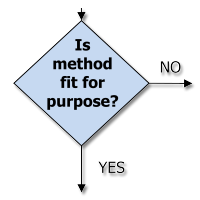The importance of being fit for purpose
Content

Method validation is an important requirement in the practice of analytical science. ISO/IEC 17025, OECD guidelines on Good Manufacturing Practice and many similar codes of practice require some level of validation, whether by verification of the laboratory's implementation of published standard methods, or by comprehensive validation studies of new, in-house, procedures. Most analytical chemists are aware of its importance, but why it should be done, when, and exactly what needs to be done, is not always clear.
This leaflet, prepared by the Eurachem Method Validation working group, gives a brief introduction to the overall process of validation and the key performance characteristics to be studied, and provides pointers to more detailed guidance.
Availability
- Download the leaflet in English (PDF, 251 kB) (Published 2025_11_13)*
Translation
Please consult the Method Validation Working Group if you would like to prepare a translation in your own language.
*Publication dates are dates of website publication. English version first published on this site on 2025_11_13.


 A laboratory will occasionally have a poor performance in a PT scheme. When this occurs, the laboratory should acknowledge it, carry out an investigation and document a review of possible causes, even if it decides not to take any specific action. This leaflet, prepared by the EURACHEM
A laboratory will occasionally have a poor performance in a PT scheme. When this occurs, the laboratory should acknowledge it, carry out an investigation and document a review of possible causes, even if it decides not to take any specific action. This leaflet, prepared by the EURACHEM 
 Test items are sometimes available from proficiency testing (PT) providers after the completion of a PT round. The EURACHEM
Test items are sometimes available from proficiency testing (PT) providers after the completion of a PT round. The EURACHEM